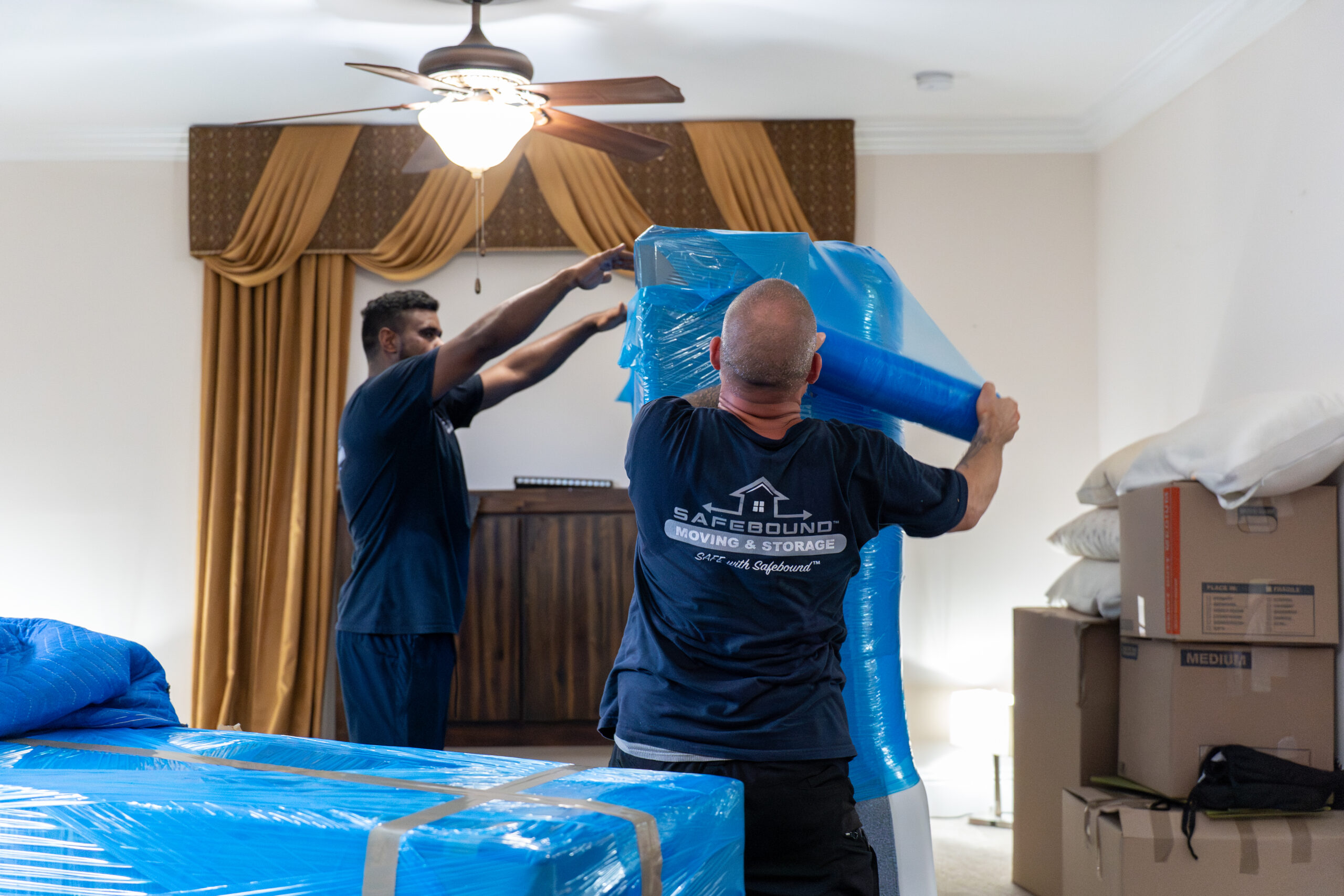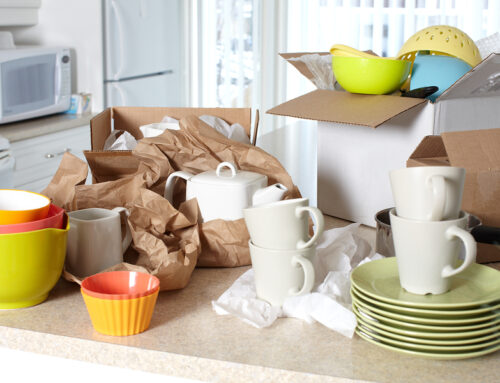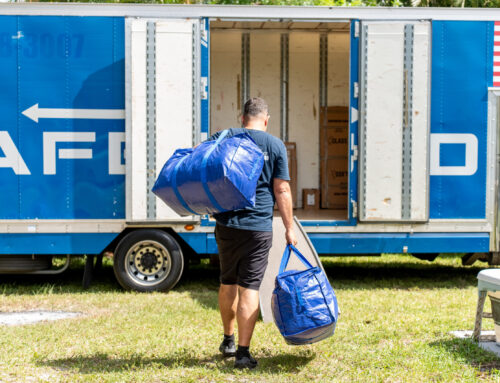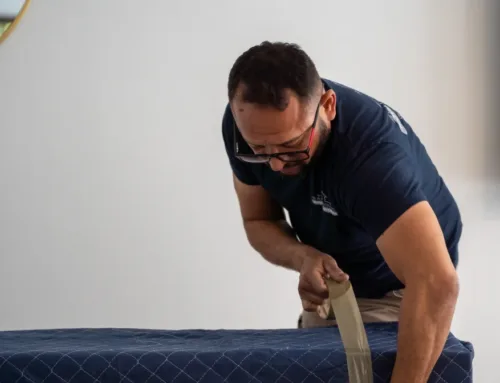So you’re staring at your grandmother’s china cabinet, your original artwork collection, or that antique dresser that’s been in the family for three generations, and you’re thinking: “How on earth am I going to move this without destroying it?”
Moving fragile items is probably the most stressful part of any relocation. These aren’t just things—they’re investments, family heirlooms, and pieces you’ve spent years collecting. One wrong move (literally), and you’re dealing with shattered glass, cracked frames, or broken memories that insurance money can’t replace.
Here’s the good news: moving fragile items safely is completely doable when you know the right techniques. After thousands of moves involving everything from priceless art collections to great-grandma’s tea set, we’ve learned exactly how professionals handle moving fragile items without the heartbreak. Let’s walk through it.
Why Moving Fragile Items Requires Special Attention
Regular packing techniques don’t cut it when you’re moving fragile items. That old newspaper-and-hope strategy? Yeah, that’s how things end up broken. Fragile items need proper materials, correct packing methods, and sometimes professional help to arrive intact.
The most common mistakes we see when people attempt moving fragile items themselves are using inadequate padding, overpacking boxes until they’re too heavy, and failing to mark boxes properly. All of these mistakes are preventable with the right approach to moving fragile items.
Essential Materials for Moving Fragile Items
Before you start moving fragile items, gather proper supplies. This isn’t the time to cut corners with whatever boxes you grabbed from behind the grocery store:
Must-have packing materials for moving fragile items:
- Heavy-duty moving boxes (double-walled for extra protection)
- Specialty boxes (dish packs, picture boxes, wardrobe boxes with dividers)
- Bubble wrap (lots of it—more than you think you need)
- Packing paper (unprinted, won’t leave ink marks on your items)
- Foam sheets or foam pouches
- Packing peanuts or foam inserts
- Corner protectors for artwork and mirrors
- Strong packing tape (3 inches wide minimum)
- Permanent markers for clear labeling
- Moving blankets for furniture
Pro tip when moving fragile items: Never use newspaper directly on dishes or glassware. The ink transfers and creates a mess that’s hard to clean. Invest in proper packing paper—your dishes will thank you.
Moving Fragile Items: Artwork and Paintings
1. Professional Techniques for Moving Fragile Artwork
Artwork is one of the trickiest categories when moving fragile items, especially if you’re dealing with original pieces or expensive prints:
For framed artwork:
- Tape an “X” across the glass with painter’s tape (if it breaks, the tape holds pieces together)
- Wrap the entire piece in bubble wrap with the bubbles facing OUT (away from the artwork)
- Place corner protectors on all four corners
- Use specialty picture boxes sized to fit, or create a custom cardboard sandwich
- Mark “FRAGILE – GLASS – THIS SIDE UP” on all sides
- Stand artwork vertically in the moving truck, never lay flat
For unframed or canvas paintings:
- Wrap in acid-free paper first to protect the surface
- Cover with bubble wrap or foam sheets
- Use rigid cardboard on both sides for protection
- Never fold or roll valuable artwork
- Consider climate-controlled transport for valuable pieces
For sculptures and 3D art:
- Wrap each protruding element individually when moving fragile items like this
- Use custom crating for valuable pieces (seriously worth the investment)
- Fill empty spaces with foam or packing peanuts to prevent shifting
- Document with photos before packing
2. Moving Fragile Mirrors and Glass
Large mirrors and glass pieces deserve special attention when moving fragile items:
- Apply painter’s tape in an “X” pattern across the glass surface
- Wrap generously in bubble wrap (at least 3 layers for large pieces)
- Use mirror boxes or create a cardboard frame around the piece
- Mark “FRAGILE – MIRROR” clearly on all sides
- Transport vertically, secured against a wall in the truck
- Never place heavy items on top of or against mirrors
Moving Fragile China, Glassware, and Dishes
3. The Right Way to Pack Dishes When Moving Fragile Items
Dish packing is an art form. Here’s how to pack dishes when moving fragile items from your kitchen:
For plates and saucers:
- Wrap each plate individually in packing paper
- Stack vertically (like records) in dish pack boxes, not flat
- Place crumpled paper at the bottom of the box for cushioning
- Fill any gaps with paper to prevent shifting
- Never mix heavy items with fragile dishes in the same box
For bowls:
- Nest bowls of similar size with paper between each
- Fill the inside of bowls with crumpled paper
- Wrap the nested set together
- Pack right-side up with cushioning underneath
For glasses and stemware:
- Stuff the inside of each glass with crumpled paper
- Wrap each glass individually
- For wine glasses, wrap stems separately with extra padding
- Pack glasses upright, not upside down
- Use cell dividers if available for extra protection when moving fragile items
4. Moving Fragile Crystal and Fine China
When you’re moving fragile items that are particularly valuable or sentimental:
- Consider professional packing services for expensive sets
- Use specialty dish pack boxes (double-walled and extra sturdy)
- Wrap each piece like it’s going to fall off a cliff (because truck vibrations are real)
- Label boxes as “EXTREMELY FRAGILE – FINE CHINA”
- Transport these boxes in your personal vehicle if possible
- Never put dish boxes on the floor where they can get wet
Moving Fragile Antique Furniture
5. Protecting Antique Furniture When Moving Fragile Items
Antique furniture requires special handling when moving fragile items with historical or monetary value:
Preparation is everything:
- Remove all detachable parts (legs, knobs, finials, glass panels)
- Bag and label all hardware, tape to the furniture piece
- Photograph the furniture before disassembly
- Wrap legs individually in bubble wrap or moving blankets
- Use corner guards on sharp edges
- Cover entire piece with moving blankets, secured with shrink wrap
Special considerations for moving fragile antique furniture:
- Don’t use tape directly on wood finishes (it can damage them)
- Stabilize drawers by removing them or securing with shrink wrap
- Remove marble or glass tops and pack separately
- Consider professional climate-controlled transport for valuable antiques
- Get appraisals and proper insurance before moving fragile items of significant value
6. Moving Fragile Collectibles and Display Items
Whether it’s Precious Moments figurines, sports memorabilia, or action figures still in their boxes, here’s how to handle moving fragile collectibles:
- Keep collectibles in original boxes when possible
- Wrap each item individually, even if it’s small
- Use small boxes—never overpack when moving fragile items
- Label boxes by collection or room
- Pack like items together
- Consider packing a “show box” with your most valuable pieces to transport personally
Moving Fragile Musical Instruments
7. Special Handling for Instruments When Moving Fragile Items
Musical instruments are both fragile AND expensive, requiring expert care when moving fragile items that make music:
For pianos:
- Always hire professional piano movers (seriously, don’t DIY this)
- Cover with moving blankets
- Secure on a piano dolly designed for the specific type
- Climate control is critical—temperature changes can damage tuning
For guitars and string instruments:
- Loosen strings slightly to reduce tension
- Use hard shell cases when moving fragile instruments
- Fill empty space in case with bubble wrap
- Never leave in hot vehicles or moving trucks overnight
- Transport in your car if possible
For other instruments:
- Disassemble when possible
- Use original cases or purchase proper instrument cases
- Pack accessories separately but nearby
- Label clearly which boxes contain instruments
- Consider instrument insurance for valuable pieces
Moving Fragile Electronics and Technology
8. Protecting Electronics When Moving Fragile Items
Modern electronics are expensive and sensitive when moving fragile items with circuit boards:
For TVs and monitors:
- Use original boxes if you kept them (this is why we tell you to keep them!)
- If no original box, wrap in bubble wrap and place in a TV box
- Fill empty space with foam or bubble wrap
- Mark “FRAGILE – ELECTRONICS – THIS SIDE UP”
- Never lay flat screen TVs face-down
- Don’t stack anything on top of TV boxes
For computers and gaming systems:
- Back up all data before the move
- Remove external components
- Photograph cable connections for easier setup
- Use original boxes or well-padded boxes
- Keep with you in your vehicle if possible when moving fragile items
For turntables and stereo equipment:
- Secure the tonearm on turntables
- Remove and pack separately any removable components
- Original packaging is best for high-end audio equipment
- Label all cables and connections
Professional Packing vs. DIY When Moving Fragile Items
9. When to Call Professionals for Moving Fragile Items
Some situations call for professional packing services when moving fragile items:
Consider professional help if:
- You have extensive art or antique collections
- You’re moving fragile items worth more than your deductible
- You lack time or proper materials
- You have large mirrors, chandeliers, or oversized art
- You’re moving a piano or other difficult instruments
- Your items require custom crating
- You want full insurance coverage (often requires professional packing)
At Safebound Moving, our packing specialists have years of experience moving fragile items of all types. We bring professional materials, proper techniques, and the insurance coverage that gives you peace of mind when moving fragile items you treasure.
Learn more about our professional packing services designed specifically for moving fragile items safely.
Moving Fragile Items: Insurance and Documentation
10. Protecting Your Investment When Moving Fragile Items
Before moving fragile items of significant value, cover yourself:
Documentation essentials:
- Photograph every valuable item from multiple angles
- Create a detailed inventory with descriptions and estimated values
- Keep receipts or appraisals for expensive pieces
- Video walk-throughs can provide additional documentation
- Note any existing damage before the move
Insurance considerations when moving fragile items:
- Understand your moving company’s basic coverage (usually minimal)
- Consider full-value protection for valuable items
- Check if your homeowner’s insurance covers moves
- Get professional appraisals for antiques and art
- Read the fine print on coverage exclusions
Pro tip: Basic moving insurance (released value protection) typically covers items at $0.60 per pound. That $5,000 painting? You’d get about $3. Full-value protection is worth it when moving fragile items of real value.
Loading and Transport Tips for Moving Fragile Items
11. Strategic Placement When Moving Fragile Items in the Truck
How you load matters when moving fragile items:
Truck loading strategy:
- Load moving fragile items last (first off the truck)
- Place boxes labeled “FRAGILE” on top, never on bottom
- Stack vertically against walls when possible
- Secure everything to prevent shifting during transport
- Use moving blankets between items
- Create a “fragile zone” in the truck front area
- Never place heavy items near fragile boxes
What professional movers do differently when moving fragile items:
- Use load bars and straps to secure sections
- Build walls of boxes to prevent tipping
- Pad between all surfaces
- Distribute weight evenly throughout the truck
- Plan the load order before lifting the first box
12. First Day in Your New Home: Unpacking Fragile Items
You’ve successfully transported your fragile items—now what?
Smart unpacking strategies for moving fragile items:
- Unpack fragile items first (reduces risk of boxes getting damaged)
- Clear a dedicated staging area
- Have trash bags ready for packing materials
- Inspect each item as you unpack
- Document any damage immediately with photos
- Don’t rush—take your time with valuable pieces
- Keep packing materials until you’re sure everything is intact
Setting up fragile items in your new space:
- Wait to hang heavy mirrors and artwork until you’re sure of placement
- Use proper hanging hardware rated for the weight
- Find studs for heavy items
- Consider museum putty for securing collectibles on shelves
- Set up display cases before unpacking collectibles
Common Mistakes When Moving Fragile Items
Let’s talk about what NOT to do when moving fragile items:
Biggest mistakes we see:
- Underestimating how much padding is needed (more is always better)
- Using weak boxes that collapse under weight
- Failing to label boxes clearly and on multiple sides
- Mixing fragile items with heavy items in the same box
- Not filling empty space (items shift and break)
- Packing boxes too heavy to lift safely
- Waiting until the last minute to pack fragile items
- Skipping insurance for valuable pieces
The cost of shortcuts when moving fragile items: One broken antique or shattered painting typically costs more than professional packing services would have. We’ve seen people save $300 on packing only to lose a $3,000 heirloom. It’s heartbreaking and completely avoidable.
Florida Climate Considerations for Moving Fragile Items
If you’re moving fragile items to or within Florida, humidity and heat create unique challenges:
Heat and humidity effects:
- Wood furniture can warp in extreme humidity changes
- Artwork and photographs are sensitive to moisture
- Electronics can be damaged by condensation
- Musical instruments go out of tune with temperature swings
Protecting fragile items in Florida’s climate:
- Use climate-controlled trucks for valuable items
- Don’t leave boxes in hot vehicles or garages
- Unpack fragile items quickly after arrival
- Allow electronics to acclimate before plugging in
- Consider dehumidifiers for storage areas
For more information about moving to Florida and our climate-controlled moving options, visit our services page.
Your Moving Fragile Items Checklist
4-6 weeks before moving:
- ☐ Take photos of all valuable items
- ☐ Get appraisals for antiques and art
- ☐ Research insurance options
- ☐ Decide DIY vs. professional packing
- ☐ Order specialty boxes and packing materials
2-3 weeks before moving:
- ☐ Begin packing non-essential fragile items
- ☐ Create detailed inventory
- ☐ Separate items you’ll transport personally
- ☐ Arrange for climate-controlled truck if needed
1 week before moving:
- ☐ Finish packing all fragile items
- ☐ Label every box clearly on all sides
- ☐ Set aside “load last” items
- ☐ Confirm insurance coverage
Moving day:
- ☐ Supervise loading of fragile items
- ☐ Transport most valuable items personally if possible
- ☐ Take photos of how items are loaded
- ☐ Keep inventory list with you
After the move:
- ☐ Unpack fragile items first
- ☐ Inspect each item as you unpack
- ☐ Document any damage immediately
- ☐ Save packing materials until everything is checked
Making Moving Fragile Items Less Stressful
Moving fragile items doesn’t have to keep you up at night. With the right materials, proper techniques, and maybe some professional help for your most valuable pieces, everything can arrive at your new home in one piece.
The key to successfully moving fragile items is planning ahead. Don’t wait until the night before to start wrapping your grandmother’s china. Give yourself time to do it right, use quality materials, and when in doubt, get professional help.
At Safebound Moving, we treat your fragile items like they’re our own. Our specialized packing services include custom crating, professional materials, and the expertise that comes from years of successfully moving fragile items of all types—from priceless art collections to cherished family heirlooms.
Ready to plan your move? Contact Safebound Moving today for a free quote. Let us know you have fragile items that need special attention, and we’ll create a customized packing plan that gives you complete peace of mind when moving fragile items you treasure.
For more helpful moving guides, check out our blog with tips on moving with pets, packing strategies, and timing your move.
External Resources:




